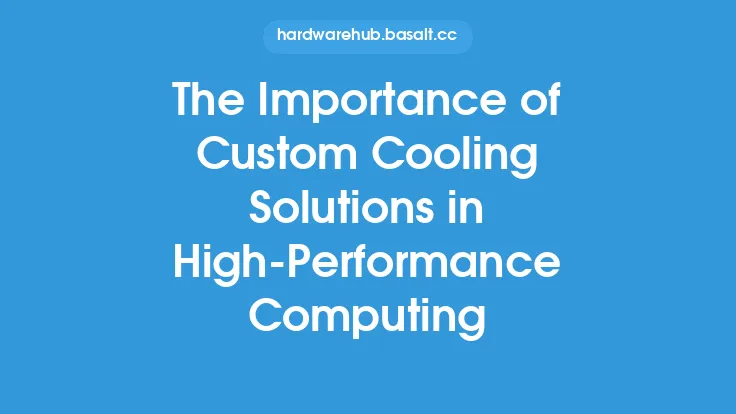When it comes to high-end motherboards, one of the most critical aspects to consider is cooling. A well-designed cooling system can make all the difference in maintaining optimal performance, especially during intense gaming sessions or resource-demanding content creation tasks. In this article, we will delve into the world of high-end motherboard cooling solutions, exploring the various options available and what makes them tick.
Introduction to Motherboard Cooling
Motherboard cooling is a complex process that involves managing the heat generated by various components, including the CPU, chipset, and voltage regulator modules (VRMs). As these components work together to provide the necessary power and functionality to the system, they also produce a significant amount of heat. If left unchecked, this heat can lead to reduced performance, instability, and even damage to the components. To mitigate this, high-end motherboards often employ advanced cooling solutions that utilize a combination of materials, designs, and technologies to keep temperatures in check.
Heatpipe and Fin-Based Cooling Solutions
One of the most common cooling solutions found on high-end motherboards is the heatpipe and fin-based design. This involves using heatpipes, which are essentially sealed tubes filled with a liquid that absorbs heat from the components, to transfer heat away from the source. The heatpipes are then connected to a series of fins, which are designed to dissipate the heat into the surrounding air. This design is often used in conjunction with a heatsink, which is a metal block that absorbs heat from the components and transfers it to the heatpipes. The heatpipe and fin-based design is effective at cooling components such as the chipset and VRMs, and is often used in combination with other cooling solutions to provide comprehensive cooling coverage.
Liquid Cooling Solutions
For more extreme cooling needs, liquid cooling solutions are often employed. These involve using a liquid coolant to absorb heat from the components, which is then transferred to a radiator where it is dissipated into the air. Liquid cooling solutions can be highly effective at cooling high-temperature components such as the CPU and GPU, and are often used in high-end gaming and content creation systems. There are several types of liquid cooling solutions available, including all-in-one (AIO) liquid coolers, custom liquid cooling loops, and hybrid liquid cooling solutions. AIO liquid coolers are self-contained units that include a radiator, fan, and pump, and are designed to be easy to install and maintain. Custom liquid cooling loops, on the other hand, involve using separate components such as radiators, pumps, and reservoirs to create a bespoke cooling solution. Hybrid liquid cooling solutions combine elements of both AIO and custom liquid cooling loops to provide a high-performance cooling solution.
Advanced Materials and Technologies
In recent years, there have been significant advancements in the materials and technologies used in motherboard cooling solutions. One of the most notable developments is the use of advanced materials such as copper, aluminum, and graphite, which offer improved thermal conductivity and heat dissipation. Additionally, technologies such as nano-thermal interface materials (TIMs) and phase change materials (PCMs) have been developed to provide enhanced cooling performance. Nano-TIMs, for example, are designed to fill the microscopic gaps between the component and the heatsink, providing improved thermal contact and heat transfer. PCMs, on the other hand, are designed to absorb and release heat as needed, providing a highly efficient cooling solution.
Active and Passive Cooling Solutions
High-end motherboards often employ a combination of active and passive cooling solutions to provide comprehensive cooling coverage. Active cooling solutions involve using fans or other devices to actively cool the components, while passive cooling solutions rely on natural convection or radiation to dissipate heat. Active cooling solutions are often used to cool high-temperature components such as the CPU and GPU, while passive cooling solutions are used to cool lower-temperature components such as the chipset and VRMs. Some high-end motherboards also feature advanced fan control systems, which allow for precise control over fan speed and airflow to optimize cooling performance.
Conclusion
In conclusion, high-end motherboard cooling solutions are a critical aspect of maintaining optimal performance and stability in high-end systems. By utilizing advanced materials, designs, and technologies, these cooling solutions are able to effectively manage the heat generated by various components, providing a stable and reliable platform for gaming, content creation, and other demanding tasks. Whether you're a gamer, content creator, or enthusiast, understanding the importance of motherboard cooling and selecting the right cooling solution for your needs can make all the difference in unlocking the full potential of your system.





